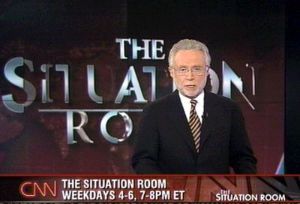NONVERBAL CUES AT WORK/IN BUSINESS
1. What’s a nonverbal cue?
Nonverbal cues include all the communication between people that do not have a direct verbal translation. Nonverbal cues are all body movements, body orientation, nuances of the voice (called Paralanguage) facial expressions, details of dress, and choice and movement of objects that communicate.
Time and space can also be perceived as having nonverbal cues. If you send a text on a Saturday night requesting your team work on a project the fact that it is a text is a cue, the day of the week and the time of day the text is sent all are nonverbal cues. Conveying things about you as the sender and what the receiver feels about them and about the subject of the request.
To clarify the statement that nonverbal cues include all the communication between people that do not have a direct verbal translation. So for example the OK sign you make with your hands is considered verbal communication while an upward movement you may make with your hands as you say ok is nonverbal communication.
Here is the list of cues and behaviors under each separate category of nonverbal communication.
- Kinesics – body movement and placement, including gesture, leaning, facial expressions
- Paralanguage - voice quality, rate, pitch, volume, and speaking style
- Prosodics - features such as rhythm, intonation, stress
- Vocalics - vocalizations other than words, such as sighs and moans
- Haptics - touch
- Proxemics - spatial distances
- Chronemics -time
- Olfactics - smell, pheromones
- Artifacts - use of objects such as cell phones, purses, cigarettes
- Technics - A label I have given to the nonverbal aspects of written texts, and electronic communication font choice, handwriting style, spatial arrangement of words, length of text, physical layout of a page and the timing of messages
2. Why are your nonverbal cues so important at work/in business?
Because nonverbal cues are sent primarily from the “emotional brain” rather than the neo cortex they create more honest and revealing messages. Nonverbal cues can help business people determine others’ motivations and analyze business interactions with much more richness; depth and insight than can come from simply relying on spoken or printed words.
Professionals who understand nonverbal cues can evaluate what their clients, customers and co-workers are really telling them in order to know how to better meet their needs—to give a better price, offer more (or fewer) details, or wrap it up and go for the close.
For instance, in a sales setting, a prospect may be saying, “Yes, go on,” but if her arms and legs are crossed with one foot bouncing towards the door, her nonverbal signals are sending a different—and much more reliable—message than her words. Her body language may be saying, “I’m not pleased with this” or “I’m not too sure about the way it’s being presented” or “Speed it up, I’m ready to get out of here.”
Employers can evaluate the messages their employees are sending to customers, clients or fellow workers and know whether that employee is hurting or helping business. And employees can learn to read the subtle signals a boss is sending in order to adjust their behavior accordingly.
In power-differential relationships, such as with superiors and subordinates, successful interactions depend on both parties being able to use and read body language. Superiors need to know how to make their subordinates comfortable while communicating their desires in order to get results. Subordinates need to know how to read the boss’s subtle signals to discern the best way to approach professional situations.
Read the words below and notice how notice the meaning can change dramatically depending on your nonverbal cues such as vocal delivery and your facial expressions and gestures.
“I’m so sorry.”
“It’s no big deal. “
“You did it.”
“No.”
“Please let’s forget all about it.”
“Whatever you want is fine with me.”
“The deadline is Sept 26th.”
Did you notice a difference? Did you see how you communicate your message with more than your words? The true meaning of a message comes from the timing, the situation or environment, the facial expression, gestures, posture, space and voice – not the words. Many times people use the right positive words with a negative delivery and hide behind the words.
3. Can our nonverbal communication be more telling than verbal communication?
Yes, because nonverbal cues are sent primarily from the “emotional brain” rather than the neo cortex. They create more honest and revealing messages. In a face-to-face interaction with just one person you can exchange up to 10,000 nonverbal cues in less than one minute. You cannot consciously control all that communication so it can be much more telling than the few words you could exchange in the same amount of time.
4. Why is it important to give nonverbal cues that convey confidence and poise at work?
First - How you hold your body, speak and move affects how you feel. If you are standing with your shoulders drooping and head bowed, the little pharmacy in your brain creates and sends chemicals into your bloodstream in less than a fortieth of a second - to make you feel the way you look. Not powerful.
Second - We form and use first impressions to access who and how to interact with each other.
The most current research says that we can form an accurate first impression 80% accurate or higher in 100 milliseconds — less than the time it takes to snap our finger. The four first impression factors are credibility, likeability attractiveness and power. We need to make sure that we are communicating those four factors confidence and credibility so that others trust us, believe in us and want to do business.
5. What are some nonverbal cues that can convey confidence at work?
Attributes like full control of the space, relaxed body language, a posture that is open, and a strong, authentic presence. To begin feeling that power yourself imagine a lion in the jungle. She establishes her space and territory; she's queen of the jungle. She's relaxed; she moves gracefully. If she met a mouse on her path, it's the mouse that would be tense. Her posture is open; she stretches out her limbs. She'd never have to battle for an armrest on an airplane. She's -authentic; she carries her confidence and stability with her. She's herself.
Take Up Space
Use the arms on the chair, stand with your feet a bit apart (men can do this more easily than women.) A female leg stance in North America is with the feet typically 4 to 6 inches apart and a male power stance starts with the feet more than 8 inches apart which could make a woman look like a gun slinging cowboy.Choose where you sit and stand
For example the new power seat (seating in detail in the book) is the middle of the conference room table.Go First
Initiate interactions. Be the first to make eye contact, offer your hand to shake, have an idea or solution, go into a room, and make the call. You can only afford to wait and go last when you are in the C-suite and ready to retire.The handshake
Always put your hand out to shake hands. A classic good handshake is one with full palm to palm contact.Eyes
Occasionally initiate prolonged, eye contact, three seconds or longer as you initiate interactions. Says, acts like communicates that you are powerful. The dominant person may alternatively prevent eye contact, saying “You are beneath me and I do not want even to look at you.” Women have to be careful of doing this when they don’t know the gentleman as it may be misconstrued as a sexual come on. (Yes, this is still true today.)Speaking
The person who speaks first often gets to control the conversation, either by talking for longer or by managing the questions. You don’t have to be loud to be confident but you may have to be a bit louder to get “the turn” to speak.
I am dedicated to my work because I believe that the greatest gift you can give another human being is to understand them.” Patti Wood MA






